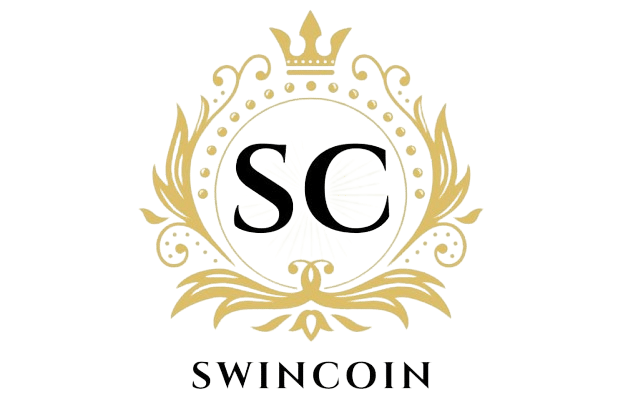Ever gazed up at the moon and wondered about its rotation, its mysterious ‘moonspin’? You’re not alone. This celestial ballet has fascinated astronomers, poets, and dreamers for centuries.
In this article, we’ll delve into the intriguing science behind the moon’s rotation, or ‘moonspin’. We’ll explore why we always see the same face of the moon and unravel the complex dynamics of lunar motion.
So, buckle up for an exciting journey that will take you from the comfort of your backyard to the far reaches of the cosmos. Let’s explore the mysteries of the moon together.
Understanding Moonspin: What is It?
Origins and Definitions
First, let’s familiarize ourselves with what ‘moonspin’ actually means. Quite simply, moonspin refers to the moon’s rotational motion or spin around its axis. It’s a phenomenon that follows a principle called ‘tidal locking’ or ‘gravitational locking’, which is a common occurrence in celestial bodies. For the moon, this principle leads to one side, the nearside, being perpetually visible from Earth – the so-called ‘Man in the Moon’.
Scholars trace the term ‘moonspin’ back until the late 19th century. It originated in the field of astronomy and has been utilized since to explain why we only observe one face of the moon.
Significance in Contemporary Culture
The concept of moonspin isn’t cloistered within the confines of astronomy and science, it’s found its way into popular culture too. It’s been a recurrent theme in literature and art, signifying mystery and the unknown as we can never see the moon’s far side from Earth.
In digital culture, moonspin has taken on a fresh spin. The term is now also associated with the dynamic world of cryptocurrencies. The crypto world uses ‘moon’ as a verb referring to a digital currency’s price skyrocketing, and ‘moonspin’ signifies the anticipation and excitement accompanying such a volatile ride.
This multidisciplinary use of moonspin, from astronomy to art and digital finance, illustrates its pliability as a term and the vast intrigue it generates across fields. As your understanding of moonspin grows, you’ll find this curiosity extending beyond just the physical, into literary metaphor and economic trends.
Features of Moonspin
Moonspin, as an intriguing concept and now an emerging trend in the digital world, carries an array of attributes. Its features extend across different fields like technology, art, and design. Let’s delve deeper into these fascinating aspects to better understand Moonspin.
Technological Aspects
Moonspin’s technological attributes pay homage to its origin in astronomy, integrating cutting-edge techniques to create a compelling digital phenomenon. It employs robust algorithms to simulate the moon’s rotation, making it a remarkable feat of software design. It’s also an example of how technology can take an ordinary concept and turn it into a striking digital representation.
When associated with cryptocurrency, Moonspin symbolizes the spiraling up of currency prices. It captures the dynamic nature of the crypto market, with powerful tools tracking and predicting price fluctuations. While not directly related to keywords such as “coinbase alternative” or “crypto bull run 2024,” the overarching association with digital currency brings Moonspin into the same technological sphere.
Artistic and Design Features
Moonspin’s artistic and design properties can range from a literal rendition of the moon’s movement to metaphorical interpretations. These aspects create diverse incarnations, as seen in digital art, graphic design, and even NFTs, without specific ties to “Logan Paul NFT.”
The rotating moon graphic signifies a sense of mystery and allure, often used as a dynamic element in graphic design. Additionally, it functions as a prevalent symbol in literature and art to denote endless cycles or the inescapable passage of time. The choice of colors, shading, and movement pace in the visual depiction of Moonspin can influence viewer interpretation and mood.
Artistically, Moonspin’s limitless potential and variability make it a fitting digital manifestation of the real-world phenomenon, bridging the gap between the physical and digital worlds.
The Impact of Moonspin
Influence on Industry
Moonspin’s transdisciplinary nature has disrupted numerous industries with its dual persona – a unique blend of tech-artistry and digital currency symbolism. In the tech world, moonspin tech, as a novel graphical innovation, attributes functionality to art, understandably garnering interest from digital art platforms like D Market. It simulates the moon’s spin cycle with stunning accuracy, drawing parallels to the rapid rotation of the digital currency world. The moonspin concept thereby encapsulates curiosity, mystery, and unpredictability, qualities closely associated with digital currencies themselves.
Moreover, moonspin’s hypnotizing rotation, symbolic of the volatility of cryptocurrency price movements, is finding use in crypto community interactions. For instance, Coinbase alternative platforms may use moonspin icons to alert users about significant price changes in their portfolio. Such innovative uses of moonspin visuals help platforms differentiate themselves in the competitive cryptospace.
Just as the moonspin graphic woos tech-art platforms, its financial metaphor invites the interest of digital currency platforms. Examples include Bitcasino and Stake Betting, which utilize the moonspin icon to highlight unpredictability, a feature inherent in their offerings. Hence, Moonspin impacts industries as diverse as tech-art and finance, sparking novelty and intrigue.
Effects on Community and Social Interaction
The moonspin’s symbolic representation of cryptocurrency price fluctuations significantly influences the crypto community’s social interactions. For instance, during a crypto bull run, communities might circulate moonspin graphics to embody the exciting, roller-coaster ride of skyrocketing prices. This emotional camaraderie strengthens the bond among crypto enthusiasts and stimulates social interaction around shared experiences.
Moonspin’s imagery also extends to the NFT community. Ranging from aspiring artists to influencers like Logan Paul, many have delved into creating NFTs with the moonspin motif. Such creations often command high valuations, further propelling the reach and impact of moonspin in digital art communities around the world. Through its captivating influence, moonspin demonstrates the potential to bridge various communities, inadvertently promoting social engagement and discussion, both online and offline.
Thus, moonspin’s impact is as broad and diverse as its definition – it permeates industries, revolutionizes social interaction, and, in the process, signifies a multifaceted revolution in the digital world.
Please Note: While the examples used involve companies and personalities in the crypto industry, the purpose is to illustrate moonspin’s influence and does not necessarily imply their actual involvement or endorsement of the concept.
Future Prospects of Moonspin
Innovations on the Horizon
Moonspin’s future direction exhibits promising potential. The innovative blend of tech-artistry and digital currency symbolism, initially noted in platforms like D Market and Coinbase alternative, has only scratched the surface of possibilities. Advances in tech-art platforms will inevitably spearhead the development of moonspin to enhance its unique imagery’s functional capabilities. For instance, this cosmic phenomenon may soon be programmatically linked to price changes in future coins casino or even in trust dice casino. This would provide a visually engaging alert system, revolutionizing the way in which you interact with digital currencies.
In the realm of Non-Fungible Tokens (NFTs), as seen with Logan Paul’s NFT, moonspin has great potential to become a key symbol of high valuation creations. Anticipated advancements in blockchain technology would likely enhance this, enabling moonspin’s imagery to be deeply woven into NFT creations, hence increasing their aesthetic value and metaphysical significance.
Challenges and Opportunities
While the prospects appear intriguing, Moonspin must navigate challenges to optimize these opportunities. One such challenge is ensuring the smooth integration of moonspin within different platforms. From Coinbase alternative to emerging platforms like Uphold, it’s crucial for moonspin to maintain its versatility and adaptability.
Furthermore, moonspin’s expansion into other cryptocurrency platforms like instant withdrawal casino no verification, stake betting, and Bitkong will demand a robust and scalable tech-art framework, necessitating solid collaborations between tech-artists and blockchain developers.
However, overcoming these hurdles keeps the door open for multiple opportunities. Greater integration of moonspin could offer platforms like Fortunejack Casino and Bitcasino an innovative edge over counterparts, reinforcing user engagement and creating visually appealing progress markers.
Moreover, incorporation into the NFT market, currently dominated by phenomena like the Logan Paul NFT, could open a new revenue stream. This would not only strengthen moonspin’s positioning within the burgeoning NFT market but also bridge the gap between tech-art, digital currency, and social interactions, forging a powerful bond that exemplifies the spirit of a rapidly evolving digital age.
Lastly, as moonspin continues to innovate in blockchain applications, it’s essential to anticipate and prepare for the upcoming crypto bull run 2024, which could catapult moonspin to unprecedented heights, reinforcing its crucial role in a perpetually evolving digital revolution.
Conclusion
Moonspin’s journey from a celestial phenomenon to a digital disruptor is nothing short of remarkable. It’s not only revolutionized the way we view cryptocurrency price changes but also emerged as a symbol of volatility and excitement. Its impact on tech-art platforms and the crypto community is undeniable. As you look towards the future, expect Moonspin to continue evolving and innovating. It’s set to reshape user engagement on platforms like Fortunejack Casino and Bitcasino, and make a stronger mark in the NFT market. The challenges it faces, such as integration across platforms and the need for collaboration, are but stepping stones to greater opportunities. So as the crypto world gears up for the bull run in 2024, remember, Moonspin is ready to spin the game in its favor. The digital revolution is here, and Moonspin is at its helm.
What is ‘moonspin’?
Moonspin is a term that initially hails from astronomy but now commonly depicts mystery and excitement in cryptocurrency price surges. It symbolizes the moon’s rotation and the volatility of cryptocurrency prices.
How does ‘moonspin’ impact industries?
‘Moonspin’ affects various industries by blending tech-artistry and digital currency symbolism. It’s influence extends to tech-art platforms where it denotes price fluctuations and social interactions within the crypto community, fostering emotional camaraderie during market changes.
What platforms is Moonspin associated with?
Moonspin is associated with alternative crypto platforms like Coinbase, tech-art platforms like D Market, and potentially in the future, with cryptocurrency platforms like coins casino and trust dice casino.
What are the future prospects of Moonspin?
Moonspin holds great future prospects, such as evolving further in tech-art platforms and becoming more integral in alerting users about price changes in various cryptocurrency platforms. Despite inherent challenges of integration and collaboration, it presents opportunities to enhance user engagement and establish a stronger presence in the NFT market.
How does Moonspin relate to the upcoming crypto bull run in 2024?
Moonspin, with its association with price fluctuations and volatility, is anticipated to play a crucial role in the upcoming crypto bull run in 2024, marking its importance in the digital revolution.







